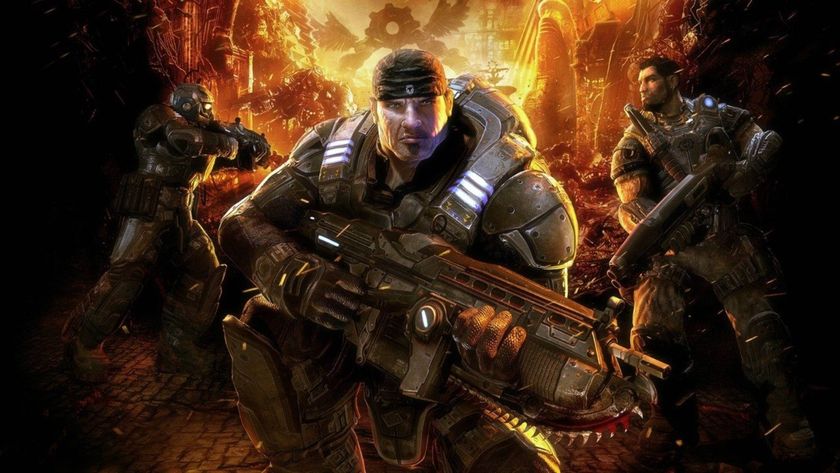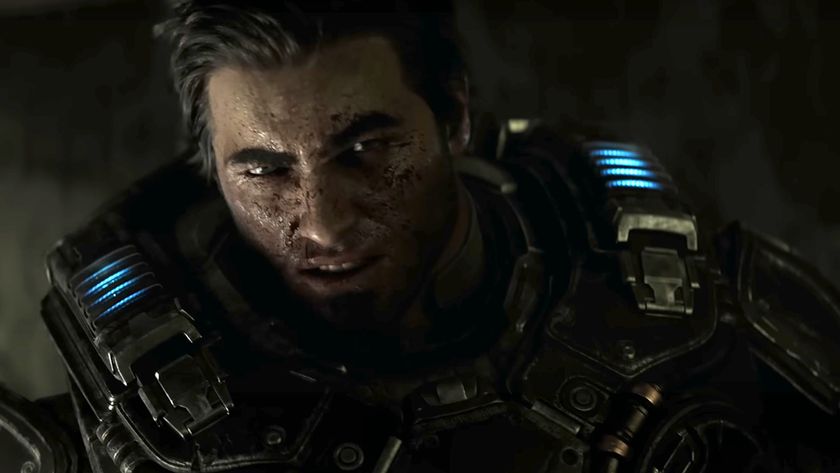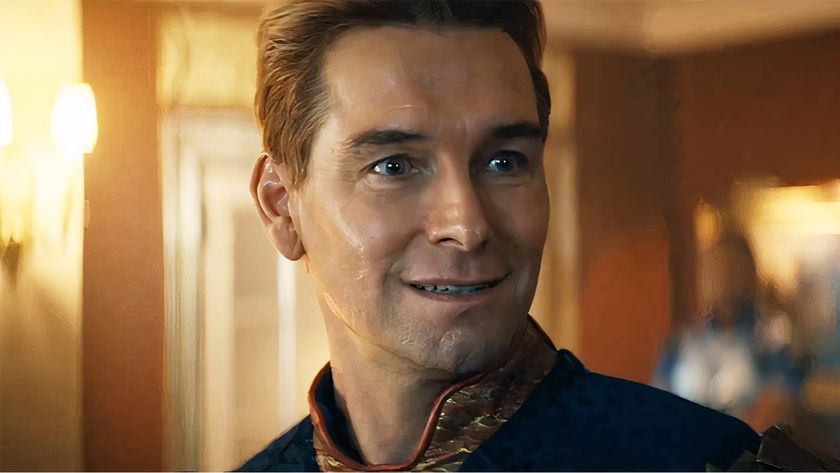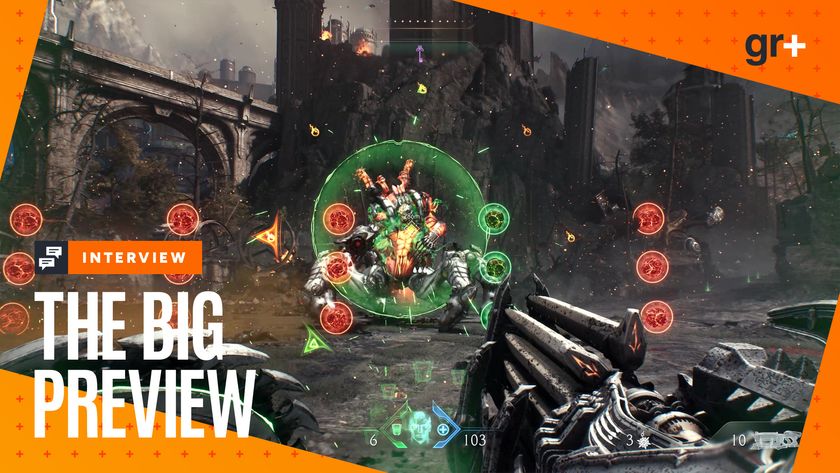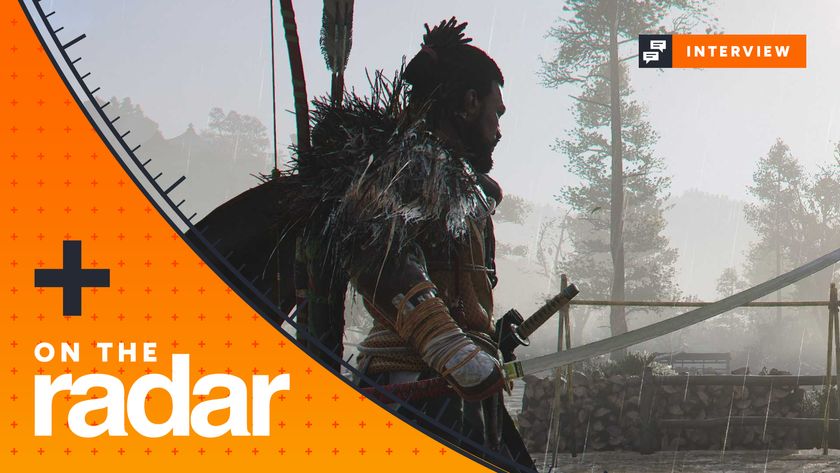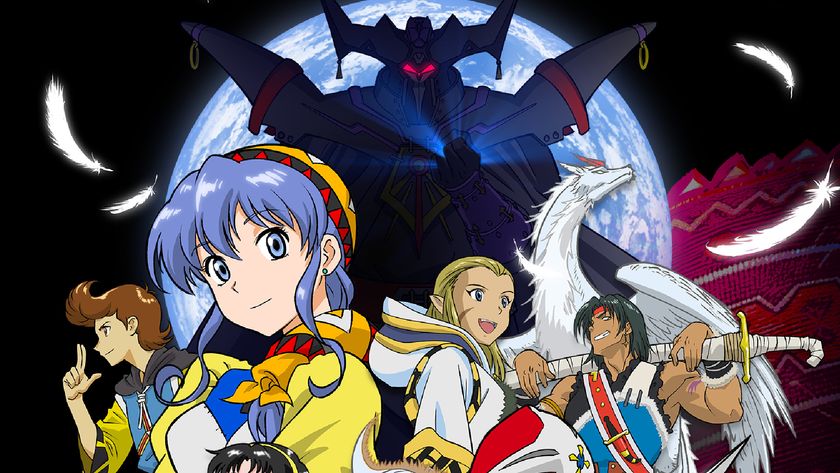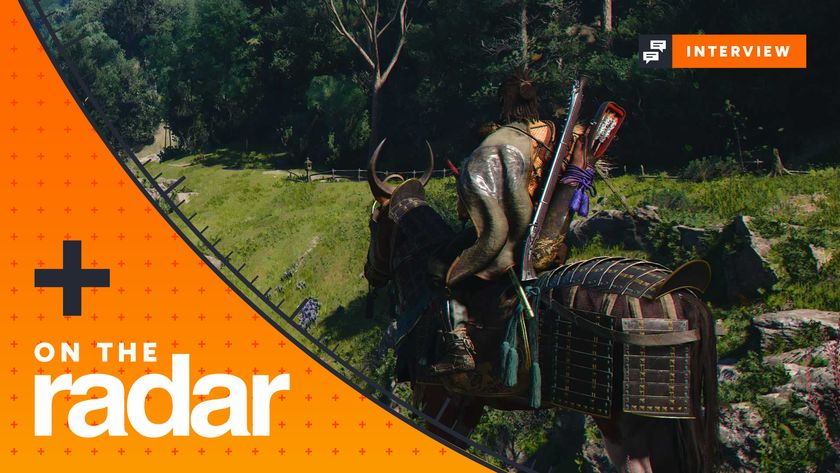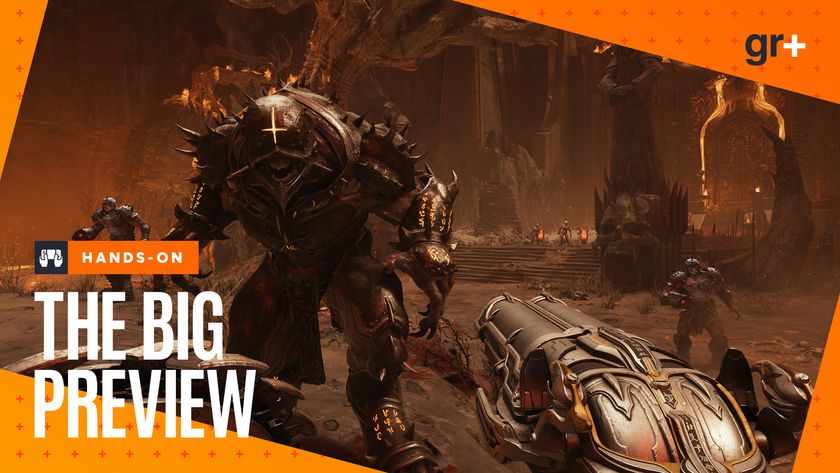Gears of War: How Xbox 360's first major exclusive played dumb to disguise its smarts and redefine a generation

Gears of War is obsessed with meat. Its prevailing images are of jacked-up jarheads charging headfirst through sweaty environments that glisten as though they’ve been rubbed down with raw steak, drenching the camera in arterial spatter as they machine gun bloodbag foes into liquid form. Or of squealing metallic teeth that shred through quivering flesh and bone as rhino-necked men carve heavyset enemies from shoulder to hip, caking the floor in entrails. Or
of former Thrashball players turned military muscle, greeting hordes of rushing monsters with just as many dumb one-liners as bullets.
It’s an association Epic embraced in 2006. Gears of War wanted to be known as a game of gristle and membrane. It yearned to floss with bacon, gargle with fat and rinse with sinew. Every curb stomp and headshot was an grim offering to the god of guts, carried out by hulking Warhammer 40K lookalikes equipped with Chainsword-like Lancers. Even the lead developer got in on the act: Cliff Bleszinski didn’t make Gears of War; Dude Huge did.
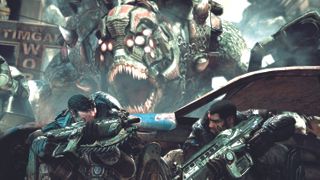
Marcus Fenix’s debut outing played this role of the big, dumb shooter to perfection. The immediacy of its combat, the unrestrained violence and the action movie caricatures helped give Xbox 360’s biggest exclusive at the time a unique voice; the lack of a next-gen Halo all-but securing its success as the first surefire multiplayer hit of the generation. But the real reason for its initial success and subsequent legacy as the most iconic third-person shooter series on Xbox is that this meathead front was all an act. Gears of War favoured brains over brawn – every chapter a lean, considered sequence of deliberate flash points, with every in-game mechanic a finely curated feature buffed until it complemented the rest.
The deception is masterful. Playing as a literal COG in a vast war machine battling scaly Locust foes, Gears’ leading man-mountains are loudly encouraged to unleash streams of bullets and hurl devastating bang-sticks. Quietly, however, so as not to arouse suspicion, perhaps, they are asked to engage a far more tactical mindset than any of its contemporaries demanded.
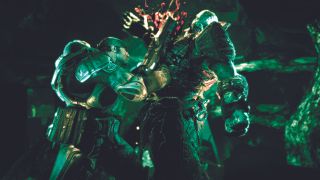
Meat and Greet
No two skirmishes are the same. First come standard fights with the Locust rank and file, their numbers increasing to pile on the pressure after every successful encounter. Then the notion of Emergence Holes are introduced: spawn points that replenish enemy ranks until they’re sealed off with a well-thrown frag. Mastered those? It’s time for multiple Emergence Holes at once, then fixed Troika turrets that need flanking, then night-time encounters where deadly clouds of flying piranhas known as Kryll patrol the shadows, and each firefight with the Locust is made that extra bit spicier by the pressing need to search for the hidden gas canisters and ignite them to chase away the hungry gloom.
At one point, packs of monkey-like Wretches charge you from both the floor and ceiling. The moment you’ve grasped the close-range shotgunning and chainsawing tactics needed to best take them out you’re dropped into situations against glowing Lambent mutations, which stick two fingers up at your enlightened ways by filling the Wretches’ insides with deadly Imulsion that explodes like a cluster bomb upon death. Leaping out of the shadows of a blood-drenched factory in the middle of a lightning storm, Lambent Wretches threaten to tip it into the horror genre. It’s not the only horror nod: one chapter of constant escalation culminates with a tip-toeing, timed encounter against an almost-unbeatable boss, where every noise you make betrays your position and will potentially see your insides smeared over the walls.
One chapter of constant escalation culminates with a tip-toeing, timed encounter against an almost-unbeatable boss, where every noise you make betrays your position
Not every divergence from the template is a resounding success. A brief driving sequence midway through feels like a refugee from a less accomplished action game. Minutes later, a cluster of scripted environmental kill opportunities are thrown into a massive base siege as if it’s a one-off design experiment by a solo member of the team unable to contribute elsewhere on the project.
Yet even these missed beats keep interest levels high: those environmental kills might be introduced with all the subtlety of an avalanche, but they entertain. The unpolished road trip across broken freeways, meanwhile, keeps you engaged by asking you to both drive and burn away attacking Kryll with a spotlight (a mechanic fellow Microsoft developers Remedy would later borrow and iterate upon in Alan Wake), the kicker being that the car’s motor can only power one action at a time, forcing you to juggle priorities.
Crimson and Cover
Like the rivers of blood coursing in Fenix’s wake the ideas never stop flowing, but there’s one in particular that helped reshape the framework of most subsequent third-person shooters: the cover system. While Operation: WinBack and kill.switch can claim to be the true progenitors of lock-to-cover systems, Gears of War popularised the concept by bringing a refined take on those early attempts to a mainstream audience. Copycats came and went with clunky replicas, but few equal the fluidity of Gears’ offering. The ability to shimmy along cover, to dart between different bits of scenery, and to both carefully aim and blindfire around blockades are all present and correct, despite early suitors to Gears’ crown failing to adopt some or all of these mechanics.
It gets the stickiness just right at the first attempt: think about all those third-person shooters where you feel superglued to cover, or where the locking ability is so loose that you sometimes find yourself out in the open when you thought you’d pressed your back against protection. That doesn’t happen in Epic’s outing. Instead, Marcus Fenix feels at one with his surroundings, leaping over barriers to chainsaw an onrushing locust, or bursting out from around a corner to roadie run underneath a corridor of gunfire – the camera pulling in close as you control his thundering charge with all the grace of steering a bookcase down a ski slope – and slamming side-first into another concrete blockade.
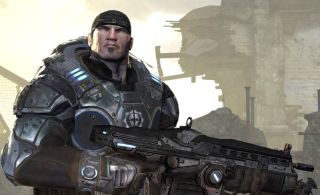
In full flow, it’s positively rhythmic. Every hit against cover, every popped head, every grenade explosion and every “Boom!” blurted by Boomers combining to make a symphony of actions and a soundtrack of death. We’re surprised that no one has ripped off the active reload system. An idea that Epic Games can rightly call their own, it takes the boring act of reloading a gun and turns it into a risk/reward mini-game where skilful manual reloads are rewarded with extra damage power, and sloppy reloads are punished by gun jams.
Nailing a perfect reload as the pressure of oncoming Locusts mounts is a fist-pumping high, which begs the question why the idea hasn’t spread into more third-person shooters. Team tactics orders, weapons that rain down jets of molten death from the sky, chainsaw melee kills that need charging up, split-path routes – those ideas just keep on coming. The game never stands still, which explains why its campaign takes just a scant six- or-so hours to complete, even when factoring in the hunt for collectibles.
Sign up to the 12DOVE Newsletter
Weekly digests, tales from the communities you love, and more
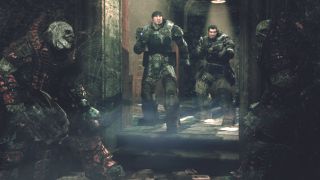
Brief though it may be, however, it doesn’t feel lacking, especially given its co-op support. The entire campaign is playable in two-player, both online and offline, and the Achievements system encourages co-op experimentation by doling out rewards specifically to those players who opt to play as Marcus’ buddy Dom. Suddenly, those branching path areas take on new meaning as they become tense tests of skill that split up co-op players. Stripped of the ability to rescue downed partners, one player’s failure to progress halts progress for both in a pressure cooker situation.
If two-player co-op doubled Gears of War’s length, eight-player competitive play increased it tenfold. Embracing its duties as Xbox 360’s benchmark online shooter, the multiplayer mode initially focused on elimination-based gametypes to ensure its rabid online community could never relax. Indeed, close-knit teams roadie running into position for four-on-four duel was the defining image of Xbox 360’s pre-Halo 3’s life; with expert kill squads honing their skills night after night as they viciously and systematically executed lesser teams, member by member.
Those marquee single-life modes meant death came swiftly for some, true, but also that the next round, and the clean slate it ushered in, was never far away. While other shooters of the time could see players trapped in lengthy games in which losing teams had no hope of recovering, Gears’ low player count and brutal rules gave rise to epic stories of glorious against-all- odds comebacks as players discovered their inner Rambos. New heroes were born every day, and no game was ever truly lost until that final death.
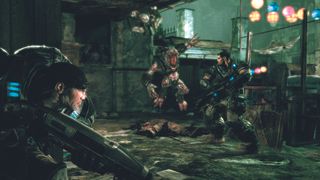
Fenix Rising
Later entries would improve Gears’ formula in nearly all areas: longer campaigns, more fleshed out online options, greater weapon variety and
bigger, busier environments, yet the original’s charm wouldn’t be eclipsed. Made in an era before set-pieces became the dominant source of action peaks, its mission statement to never repeat the same idea was unique. And though home to some naive design choices (can anyone offer a satisfying explanation for the invisible-hovering-robot-cum-door-opening-Guilty-Spark-a-like Jack?), Gears' quality far outshone its rough edges at a transformative point in time early on in a new console cycle – playing its part in forever shaping what Xbox 360 games would offer as standard.
Even its advert, a haunting, sombre CG movie with Mad World playing in the background, became influential. As a result, we're still beset by CG game trailers coupled with acoustic covers of popular songs, but that's not all: the advert's core idea actually became a scene in the third game.
More than just a means of selling Xbox 360s, Gears doubled as an advert of Epic's own tech for key decision makers inside the industry. Point at the genre-wide adoption of cover systems all you like, but the game’s biggest mark on the Xbox 360 generation was in making Unreal Engine 3 the go-to engine for developers, despite fierce competition from the likes of CryEngine and Source. Borderlands, Mirror’s Edge, BioShock Infinite and Batman: Arkham Asylum... the list of award-winning Xbox 360 classics that followed in Gears of War’s footsteps is as impressive as it is long. Yet no matter what successes those games achieved in their lifetimes, none could ever claim to have shaped nearly a decade of gaming design and business quite like Epic Games’ original ode to meat.
